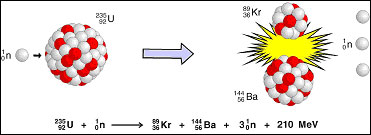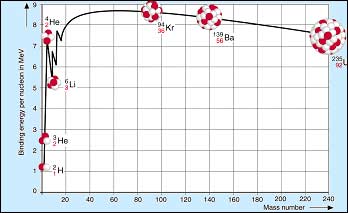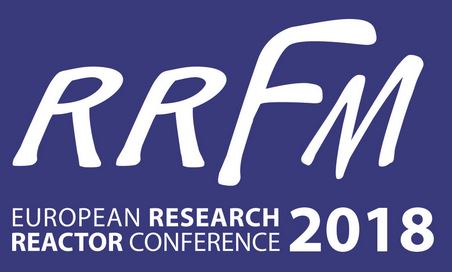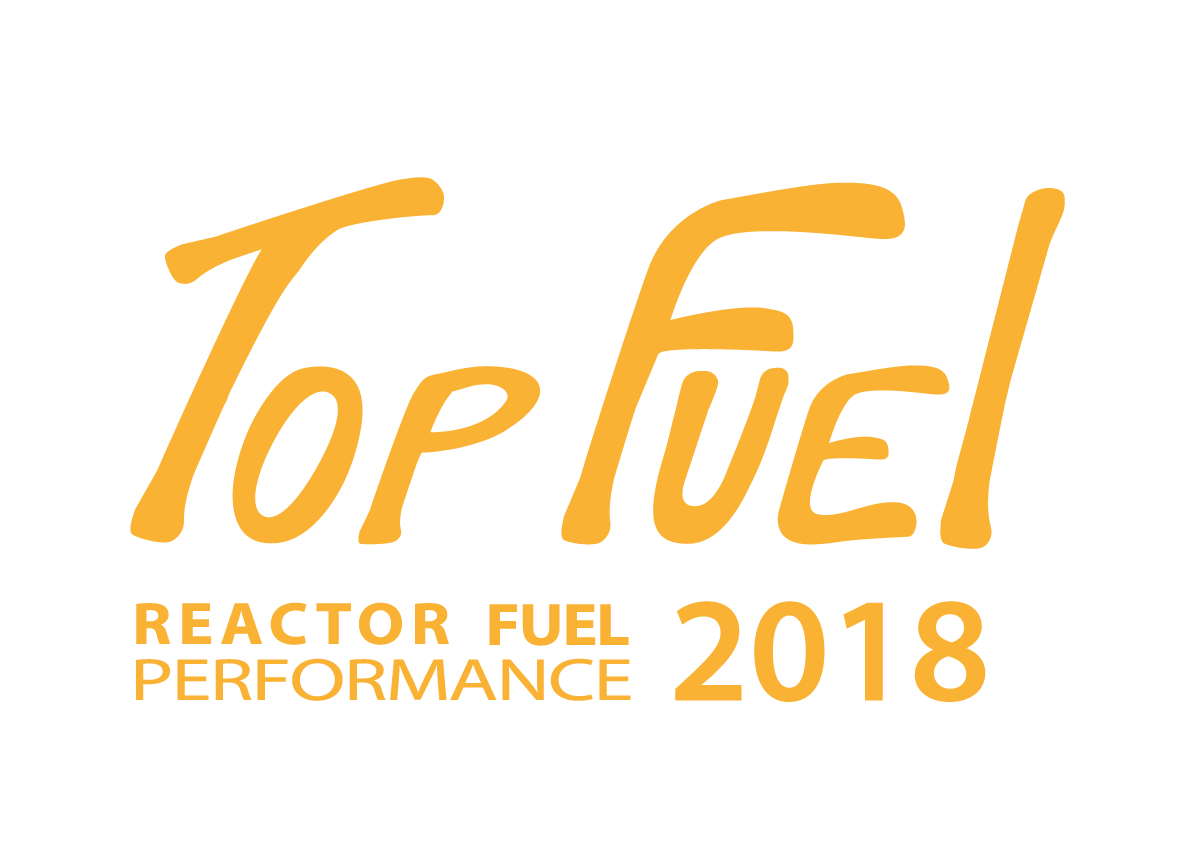Nuclear fission
 scroll scroll 
Fission of an atomic nucleus into two parts of the
same size caused by the collision of a particle. Nuclear fission may
also occur spontaneously in the case of very heavy nuclei; (See 'fission,
spontaneous'). The capture of a neutron induces fission of the nucleus
of uranium-235. During the fission, in general two - more rarely three
- fission products, two to three
neutrons and energy are generated.

Example for nuclear fission of U-235
In the uranium nucleus the nucleons are bound with an average energy of about 7.6 MeV per nucleon. In the
fission product nuclei, the medium binding energy per nucleon amounts
to approx. 8.5 MeV. This difference in binding energy of 0.9 MeV per
nucleon is released in the nuclear fission. Since the uranium nucleus
has 235 nucleons, a quantity of energy of about 210 MeV is released
per fission. It is made up of the following partial amounts:
-
kinetic energy of fission products 175 MeV,
-
kinetic energy of fission neutrons 5 MeV,
-
energy of the gamma radiation occurring during the fission 7 MeV,
-
energy of beta and gamma radiation during the decay of the radioactive
fission products 13 MeV,
-
energy of the neutrinos 10 MeV.

Course of nuclear binding energy
Due to the neutrons released during the nuclear fission a chain
reaction is possible in principle. Facilities where fission chain
reactions are initiated in a controlled manner are called nuclear reactors.
back
|
|

11 - 15 March 2018
Munich, Germany

30 September - 04 October 2018
Prague, Czech Republic |